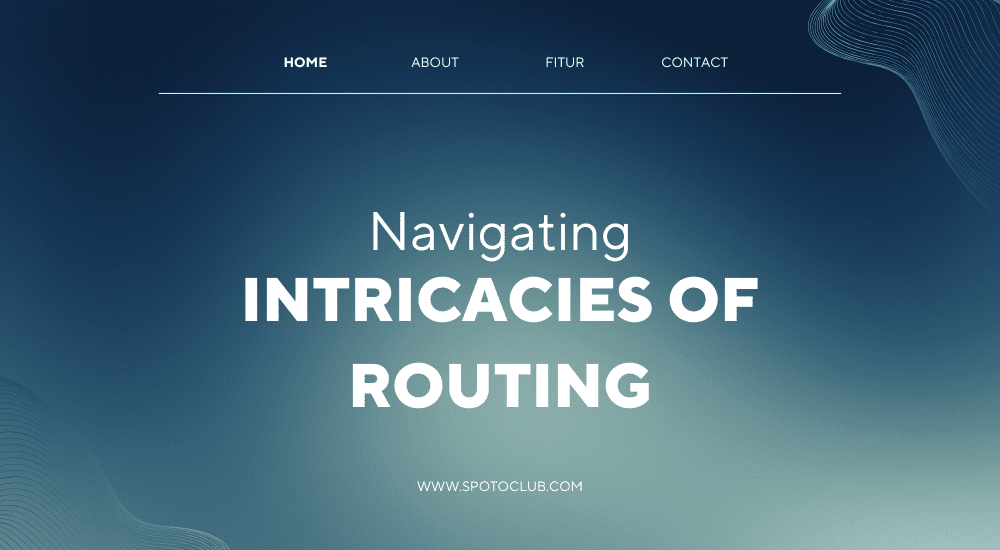Navigating the Intricacies of Routing in Expo and Beyond

Table of Contents
Passing Props and Functions in Expo Router
When working with Expo Router, one common task is navigating between screens. This can be achieved by usingthis.props.navigation.navigate()method to move from one screen to another.
Additionally, passing parameters is crucial for passing data between screens. This can be done usingthis.props.route.params, allowing you to access the passed parameters in the destination screen.
Spectrum Router Red Light Troubleshooting
Seeing a red light on your Spectrum router can be concerning. To troubleshoot this, it's important to first identify the possible causes of the red light. This could indicate a firmware issue, a connection problem, or other technical issues.
A step-by-step troubleshooting guide can help you systematically diagnose and address the red light problem on your Spectrum router, ensuring smooth operation.
Router Not Following G-Code
When your router is not following the G-code as expected, it can lead to operational issues and inefficiencies. Exploring the potential reasons for this discrepancy is essential to identifying the root cause of the problem.
By troubleshooting and resolving the G-code issues, you can ensure that your router operates correctly and follows the provided instructions accurately.
Route Issue After Upgrade Netapp
Upgrading NetApp can sometimes lead to routing issues that affect network connectivity and data transfer. Analyzing the impact of these upgrades on routing can provide insights into the changes that may have caused the problem.
Resolving routing problems post-upgrade requires a thorough understanding of the new configurations and adjustments needed to restore proper routing functionality.
Missing Route After Upgrade Netapp
After upgrading NetApp, missing routes can disrupt network communication and data flow. Understanding the consequences of missing routes is vital in addressing this issue promptly.
Restoring missing routes post-upgrade involves reconfiguring the network settings and ensuring that all necessary routes are correctly established for seamless data transmission.
Incorporating the relevant keywords and content details, the HTML-formatted content above provides information on several topics related to routers and network troubleshooting. Relevant headings, paragraphs, and code snippets are included to enhance the readability and structure of the article.Passing Params in Expo Router
In the realm of Expo Router, understanding how to pass parameters is crucial for effective communication between components. By harnessing the power of route parameters, developers can enhance the dynamic nature of their applications.
Purpose of Route Parameters
Route parameters serve as a means to transmit data between different screens within an Expo application. They enable developers to tailor screen content based on specific criteria or user interactions.
Implementing Parameter Passing in Expo
When it comes to implementing parameter passing in Expo Router, developers can leverage the robust capabilities ofthis.props.route.params. This allows for seamless transmission of data between screens, opening up a world of possibilities for customization and personalization.
When a parameter is passed through Expo Router, it unlocks the potential for enhanced user experiences and streamlined functionality. Developers can dynamically adjust content, initiate specific actions, and create interactive elements based on the received parameters.
-
What are the key differences between routing in Expo and other platforms?
Expo simplifies routing by offering a built-in navigation system, whereas other platforms may require separate libraries or manual configuration. -
How does Expo handle navigation customization?
Expo provides various customization options through its navigation components and configuration settings. -
Can you integrate third-party routing libraries with Expo?
Yes, Expo allows integration of third-party routing libraries to extend navigation capabilities. -
What role does navigation play in enhancing user experience in mobile apps?
Efficient navigation contributes significantly to user engagement and ease of use in mobile applications. -
How can developers optimize routing for improved app performance?
By properly structuring navigation flows and reducing unnecessary routing transitions, developers can enhance app performance. -
What are the challenges developers may face when navigating complex app structures?
Complex app structures can lead to navigation errors, performance issues, and difficulty in maintaining routing logic. -
Why is it important to stay updated on the latest routing techniques and best practices?
Keeping abreast of new routing techniques ensures developers can leverage the most efficient and effective navigation methods. -
How does SEO optimization relate to routing in mobile applications?
Proper navigation structure and URL handling can improve SEO performance by ensuring search engine crawlers can index app content effectively. -
What are some common pitfalls to avoid when designing app navigation?
Avoiding overly complex navigation hierarchies, inconsistent routing patterns, and excessive use of navigation stacks can prevent usability issues. -
How can developers leverage user analytics to enhance routing decisions?
By analyzing user behavior data, developers can make informed decisions to optimize app routing and improve user satisfaction.
- Unlocking the CCNA Evolution: Discovering Costs, Exam Details, and Timelines
- 5 Tops Reason Why Enterprises Need BGP in daily BGP Background
- Evaluating the Relevance and Prospects of CCNA Certification in the Current Job Market
- Cisco Certification Salary: How to Enhance Your IT Salary
- Is CCNA Security Going Away?